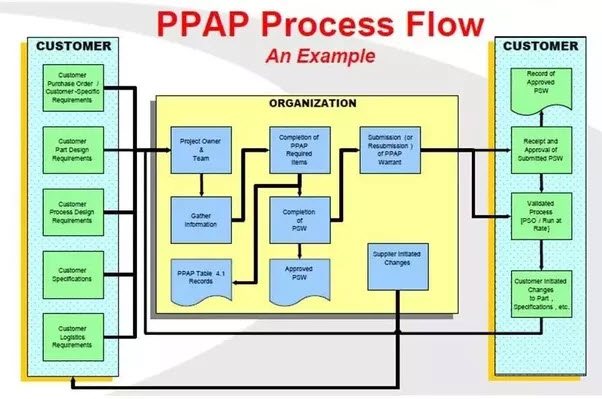Basically, PPAP is a process of risk identification and alleviation which is used to deliver to the customers in an evident way for assuring that there is a trust worthy and repeatable process. Previously, this process was formed and utilized by the automotive industry, but now it is being used by various industries for improving their communication so they can offer higher quality products. Production Part Approval Process (PPAP) facilitates to assure effective communication between a customer and supplier with positive anticipations that there will be less returns and modifications to the product or procedure.
Functions of Production Part Approval Process (PPAP)
The process of approval for fresh or revised parts, or parts created from latest or considerably revised production techniques are clearly defined in PPAP. The PPAP process comprises of 18 components that may be necessary for the authorization of production level parts. Every component is for not necessary for all submissions. Usually, there are five accepted submission levels of PPAP. Moreover, the PPAP manual covers comprehensive details, guiding principles and sample documents that are quite handy for finalizing the process requirements. The consequential PPAP submission offers the proof that the supplier has fulfilled or surpassed the customer’s needs and the process is proficient for repeating quality parts in a consistent way.
Implementation of PPAP
The Production Part Approval Process (PPAP) is like a strategy or we can say a work plan. Mainly it is the negotiation between the customer and supplier in a direct way that authorizes how each PPAP component is fulfilled. Negotiation should occur in advance of the requirement acceptance and the process is different as every PPAP is not similar. It makes certain that both parties have similar expectations. The requirement of the Production Part Approval Process (PPAP) occurs anytime when a new part of change to a part or process on hand is being considered. PPAP can be requested by a customer at any time during the product life. It is a requirement for suppliers to keep a quality system that develops and documents every requirement for the submission of PPAP. However, customers have not the responsibility of maintaining a PPAP. In order to implement a Production Part Approval Process (PPAP) one needs to follow some guidelines.
We must work with the person evaluating the PPAP to make sure that we are offering exactly what they are looking for. Although this must be standard, a lot of assessors would like to observe things in their own way. In case if a PPAP is not accepted, then we must request to evaluate the complete document again. The data collection must be established prior to the part creation for making sure that nothing gets overlooked. A folder must be formed to move with the part in the course of production so things can be included, such as first article reports and certificates for material. Furthermore, we have to get ready for the PPAP during the period of contract review. It holds paramount value as it is extremely hard to get find the answers of questions during the project’s production stage when a delivery date is coming up. Before the order is processed it must be ensured that we cover and know every applicable specification. More to the point, this is the time were we must document the Control Plan and FMEA (Failure Mode and Effects Analysis) too.
Additionally, all material certificates must be reviewed before using the article. We have to seek requirements for instance tensile strength, yield strength and chemistry for fulfilling customer requirement. Moreover, another important consideration is factoring in the additional time for processing the order and approving the PPAP. It must be ensured that we have given enough lead time because we may need to make fixtures, tune in our operating limitations and some time may be taken by the customer for documentation review.
It is important to realize the fact that PPAPs are a price of doing business with a number of key manufacturers. Pricing adjustments or charging for this level of documentation might be essential to substantiate the additional labour. Nevertheless, it is certain that there is a value in making sure that our products fulfils the customer’s requirement and being capable to provide its evidence with proper documentation.






